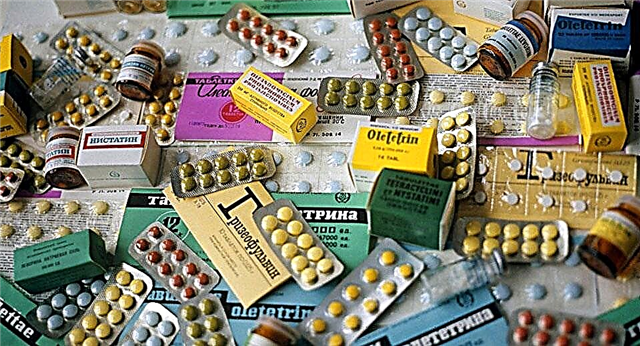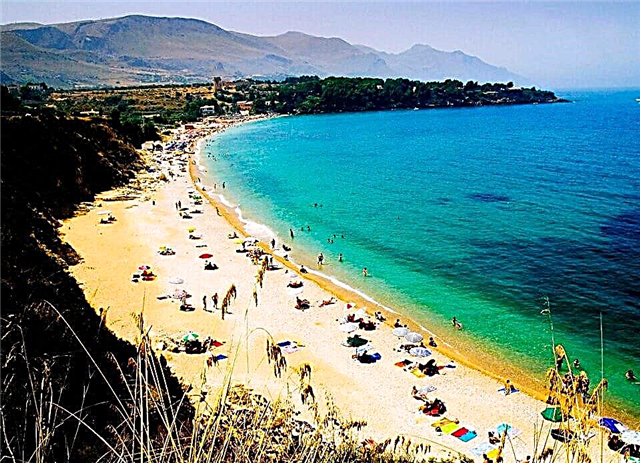Traveling around the world and getting acquainted with the sights of a particular country, each tourist, of course, pays his attention to national traditions and to the cultural heritage of different peoples. Perhaps, among the variety of festivities and festivities, with which every nationality is rich, the Mexican Day of the Dead stands out most clearly for its uniquely bold attitude of people to the afterlife.
Of course, almost every nation has the custom of commemorating the dead in one form or another. However, in Mexico, death is treated in a completely unusual way, and for many tourists it is even unacceptable: it is customary to discuss it, you can often hear warm reviews and humorous stories about it, it is often glorified and words of respect are shown to it. Toys, figurines, vases and household utensils in the form of skulls and skeletons are present in the home of every Mexican. It is quite easy to be convinced of the veracity of the above, for this it is enough to visit this, for the majority, incomprehensible and fascinating country - Mexico. Naturally, you can go here at any time of the year, but if you want to see with your own eyes the joy with which Mexicans honor death, how the tradition of commemorating the dead is carried out, then it is best to schedule your trip for the end of October - beginning of November.
It is quite easy to be convinced of the veracity of the above, for this it is enough to visit this, for the majority, incomprehensible and fascinating country - Mexico. Naturally, you can go here at any time of the year, but if you want to see with your own eyes the joy with which Mexicans honor death, how the tradition of commemorating the dead is carried out, then it is best to schedule your trip for the end of October - beginning of November.
The holiday under the terrifying name "Day of the Dead" lasts for several days: from October 31 to November 2. The very tradition of the celebration is rooted in ancient times and is nothing more than a fusion of the Catholic faith and the pagan rites of the indigenous peoples of Mexico. The day when, with the help of rituals, alms, services and fasts, it was possible to help souls move from Purgatory to Paradise, was the day of November 2. When in the 16th century the Spaniards, having entered the territory of Central America, got acquainted with local rituals, they considered them nothing more than a blasphemous attitude towards death. However, they failed to eradicate this tradition "neither by fire, nor by sword". And if earlier such celebrations were held in the middle of summer, then over time the holiday was postponed to early November. November 1 is the day when the untimely deceased babies are commemorated, it is called the "Day of Little Angels". November 2 - "Day of the Dead" - people who have died are commemorated.

The day before the holiday, local residents, "armed" with doll, flower, paper skulls and skeletons, decorate all buildings in Mexico with them. Houses, offices, shops and restaurants, all these buildings are simply full of images of the dead and death itself with a scythe in hand. On the pillars and in the windows, bright posters are pasted up, causing a mute shock to tourists who first arrived in Mexico: these can be skeletons of a bride and groom, skeletons of people killing skeletons of bulls. Portraits and photographs of people who have departed to the afterlife are hung everywhere. In addition, crowds of people go to cemeteries, where graves are decorated with flowers, wreaths and candles, which are lit on the night of November 1. It is worth noting that these rituals have nothing to do with the Catholic and Christian faith, they still cause indignation and righteous anger among church representatives.
According to the belief system that the Mexicans inherited from the Aztecs, the deceased person continues to exist in the afterlife, in Mictlan. Death is just a transition from one form of life to another, but by no means its end. Once a year, the deceased go down to their homes to see relatives and friends again, to remember earthly joys and the happiness they were able to experience in their past life. Mexicans believe that the dead take "leave" these days. On November 1 and 2, in every house you can see an altar decorated with yellow marigolds, which are considered to be the flowers of the dead. It is designed to help deceased souls find their home and visit it. Flowers and candles, cornmeal dishes, toys for angels and bottles of tequila for deceased adults, water to quench the thirst of a spirit that has come, and bread shaped like a human bone are required near the altar. Friends and relatives get together to meet their invisible visitors. Priests go from door to door, read prayers near altars and bless their parishioners. At the most terrible time for any person (closer to midnight), everyone goes to the cemetery, where, near a previously cleaned grave, they arrange picnics and noisy dances to live music, exchange food and drinks, share memories and believe that deceased souls are nearby with them and observe all their actions.
It is designed to help deceased souls find their home and visit it. Flowers and candles, cornmeal dishes, toys for angels and bottles of tequila for deceased adults, water to quench the thirst of a spirit that has come, and bread shaped like a human bone are required near the altar. Friends and relatives get together to meet their invisible visitors. Priests go from door to door, read prayers near altars and bless their parishioners. At the most terrible time for any person (closer to midnight), everyone goes to the cemetery, where, near a previously cleaned grave, they arrange picnics and noisy dances to live music, exchange food and drinks, share memories and believe that deceased souls are nearby with them and observe all their actions.
On the eve of the holiday, local small shops and shops are literally flooded with clay, paper, chocolate, cardboard coffins, skulls and skeletons. Children dressed in death costumes roam the streets and beg for gifts (chocolate or sugar skulls) from passers-by. In addition, festivals and concerts are held in many large Mexican cities, exhibitions open, where, as a rule, you can not only see everything, but also take a picture for memory. By the way, there are quite a lot of tourists in the cemeteries these days, but they do not bother the locals. It seems that the Mexicans do not notice their presence at all, as the guests of the country take pictures and video of this, perhaps the most terrible holiday on our planet, without any problems. The Day of the Dead in Mexico is officially recognized as a national holiday, so on November 1 and 2, all educational institutions, banks and commercial organizations are closed.











